by Sharon Quercioli

Yvoire, France! Where do I begin?… This romantic, medieval village on the French shore of Lake Geneva (a.k.a. Lake Leman) will fill your heart with calm and tranquility.
We stayed at Le Pre de la Cure Hotel, about a hundred steps outside the ancient walls, where history unfolds before you as you stroll along narrow, cobblestone streets, gazing upon centuries-old, stone houses, perfectly cast alongside flowering, majestic gardens. Yes…Yvoire is magical.
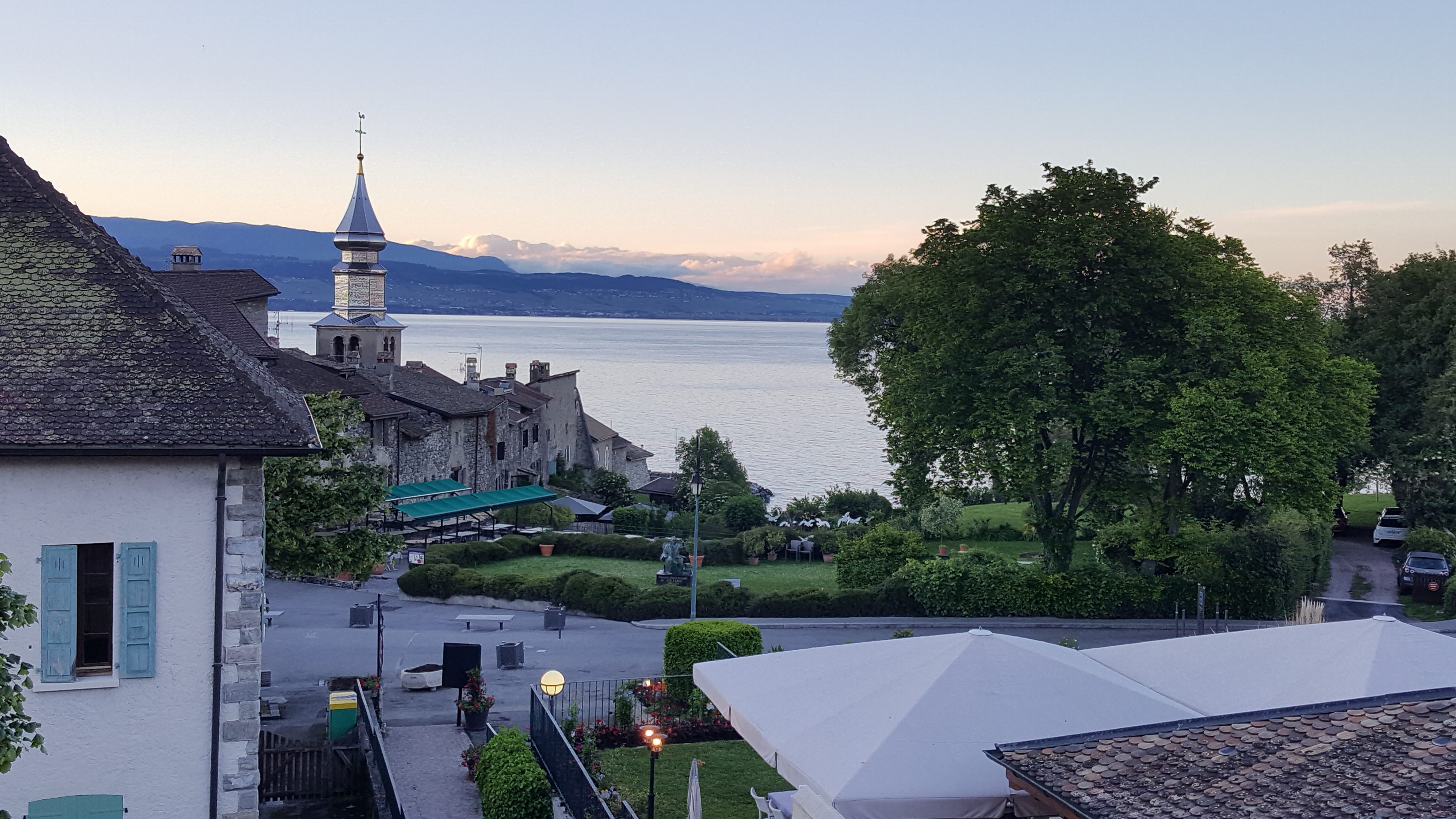
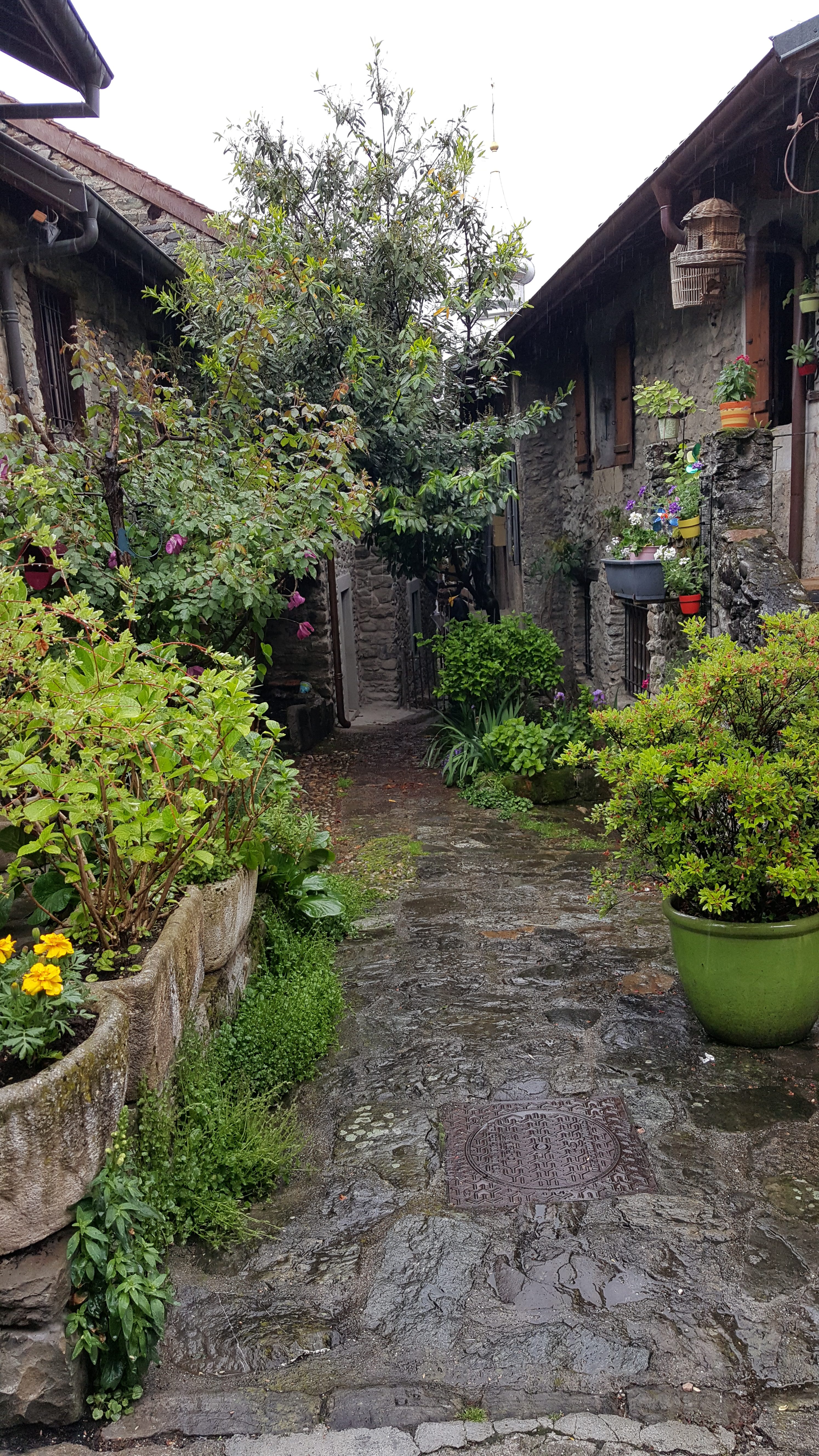
While walking through the heart of the village or along its waterfront, you see the spectacular views of the lake, the surrounding mountains, and, of course, the magnificent castle. Yvoire is popular with day-trippers and features numerous restaurants, cafés, boutiques, art galleries, studios and souvenir shops. The village is particularly attractive during spring and summer when it is filled with flowers blooming from seemingly every balcony and windowsill.

The aroma of French cuisine was everywhere, and we ate at the most wonderful restaurants, enjoying fresh fish from the nearby lake, charcuterie, wines and cheeses.
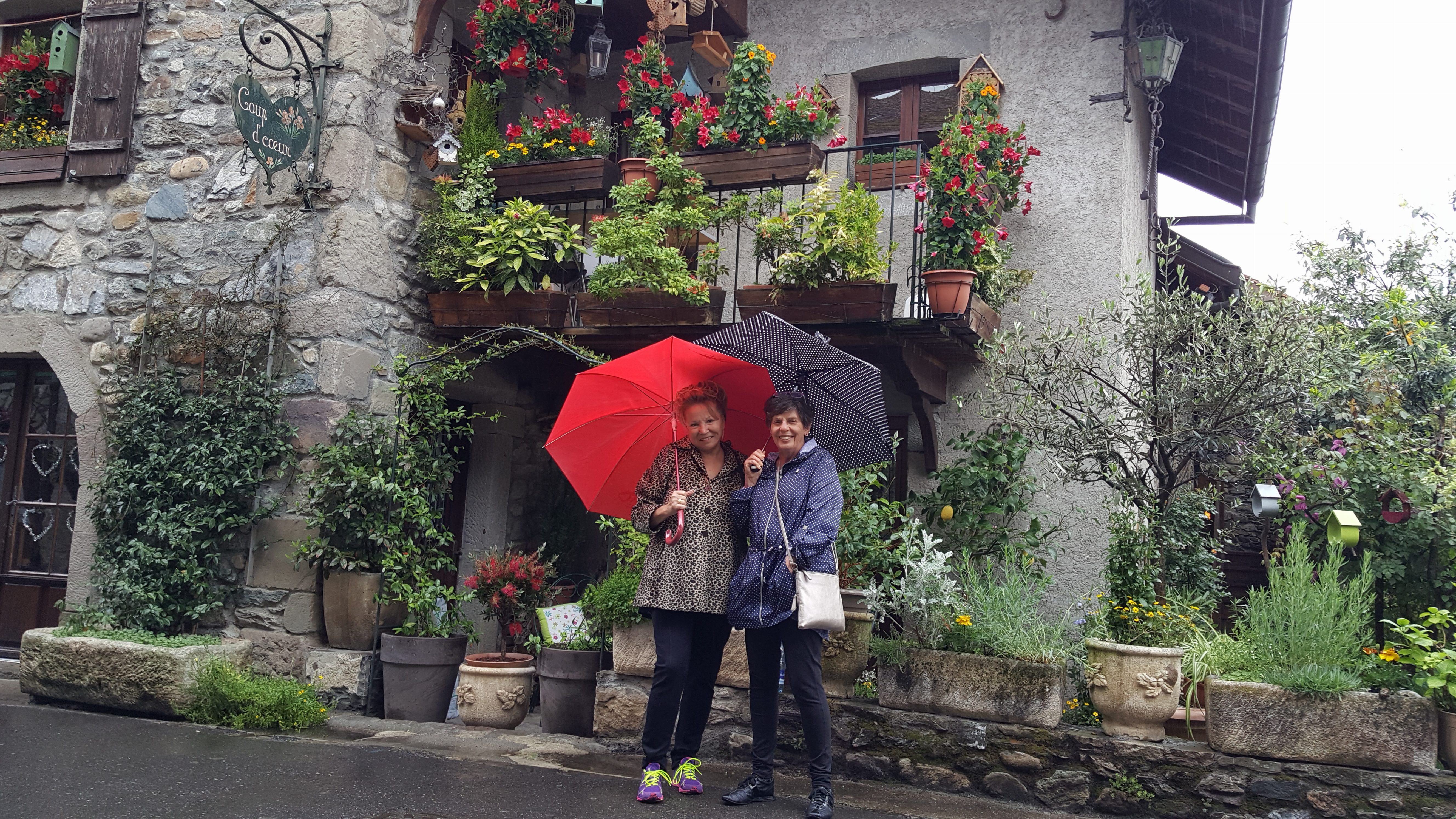
A Bit of History
Yvoire is a small medieval town in the department of Haute-Savoie, in the southeastern French region of Auvergne-Rhône-Alpes. Since ancient times, the upper valley of the Rhône and Lake Geneva have formed a route through the Alps between Italy and France; the lake itself, with its varying winds, facilitates the transport of goods which are carried on lateen-rigged boats.
Yvoire’s strategic position, on a point between the “small lake” and the “large lake,” did not escape the notice of Count Amédée V the Great, who under took important fortifications from 1306, during the war between the Dauphiné and Savoy. For half a century, the village had a very important military role, which earned certain freedoms for its inhabitants in 1324.
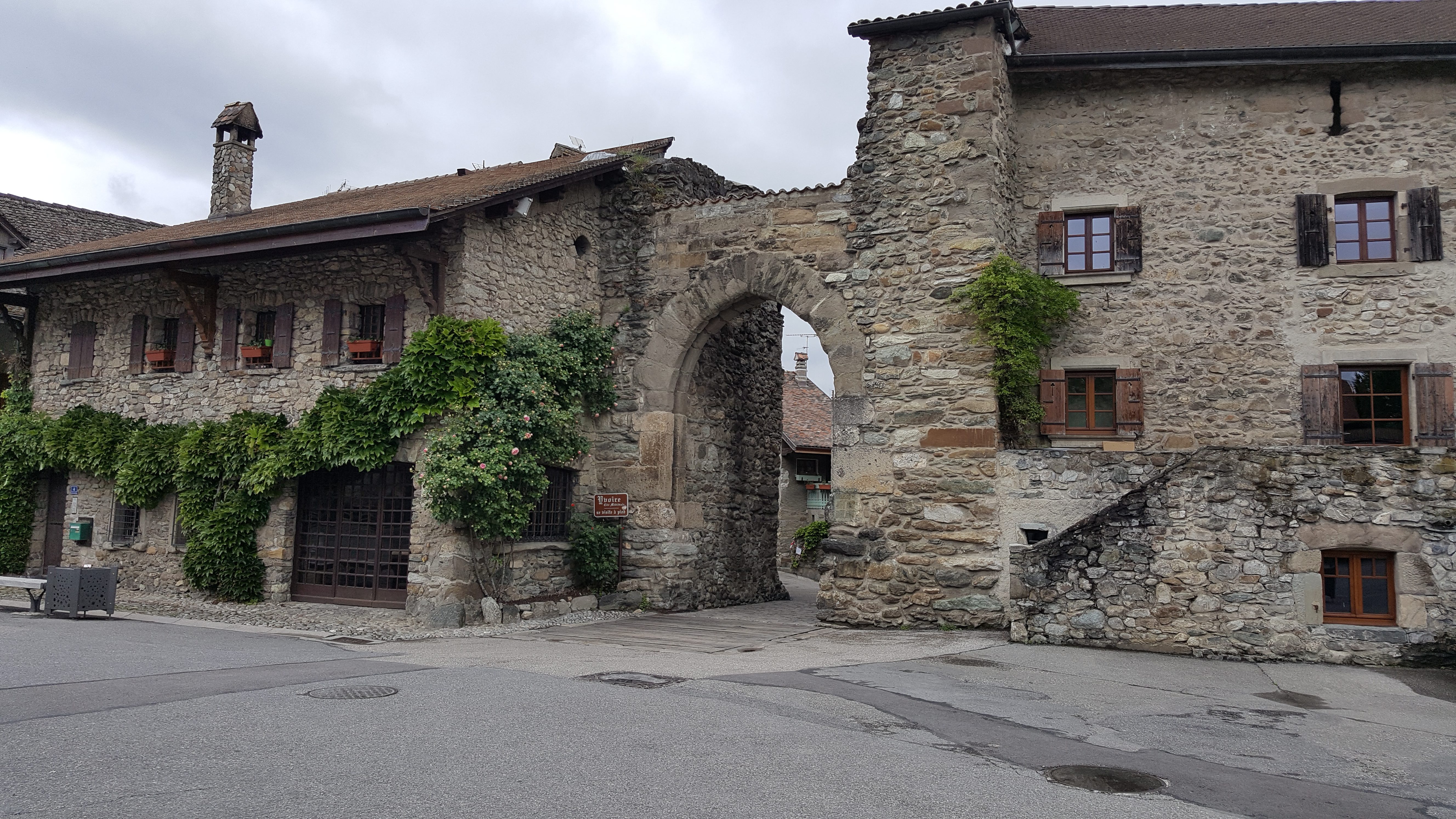 Later, when the whole region was occupied by the Bernese, allies of the French and Genevese from 1536 to 1591, the village lost its ramparts and military role. The castle was burnt and remained roofless for 350 years.
Later, when the whole region was occupied by the Bernese, allies of the French and Genevese from 1536 to 1591, the village lost its ramparts and military role. The castle was burnt and remained roofless for 350 years.
Known as a modest fishing village at the beginning of the 20th century, Yvoire is now ranked as one of the International Laureates of Floral Decorations and is a member of the Association of the Most Beautiful Villages of France. The flowers are the smile of Yvoire; they’re climbing on the roofs, running along the alleys and squares, brightening up the wooden terraces. This medieval city celebrated its 700 years in 2006.
Garden of Five Senses – (Jardin des cinq Sens)

In the heart of the village is a little piece of heaven where you will awaken your five senses: Sight, Touch, Smell, Hear, and Taste!
Everything is made for your pleasure: Sight — the pleasure of your eyes with the colorful landscape provided by the arrangement of the flowers; Touch — the pleasure of stroking the softness of the foliage; Smell — the pleasure of smelling the roses or inhale the perfume of a pineapple sage; Hear — close your eyes and let the singing of the birds soothe you, as well as the whispering of the fountains; Taste — the pleasure of rediscovering the savors of the “homemade jams” of your childhood with fruits and vegetables.
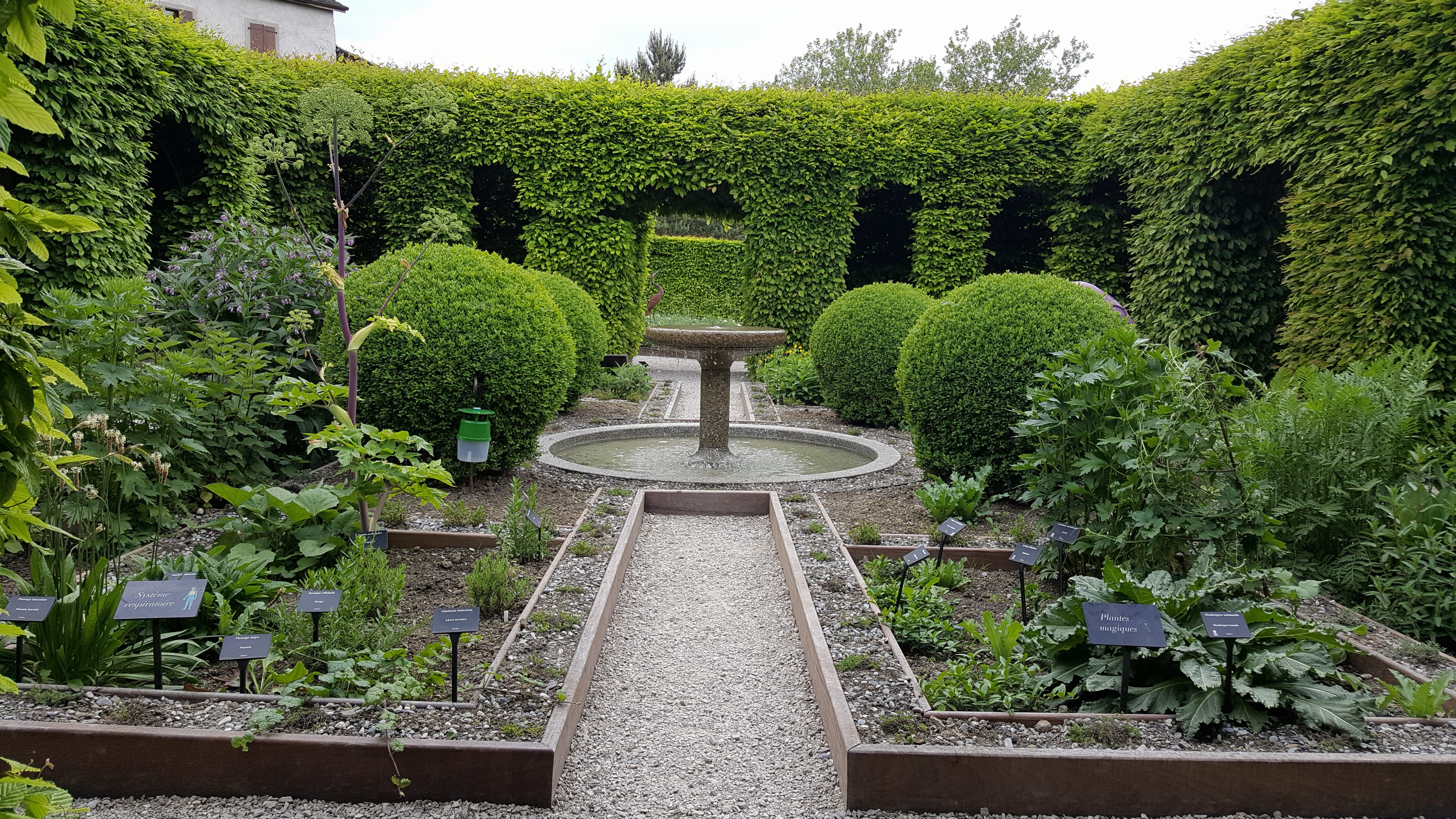
I loved the roses. They reminded me of my mother, and I even purchased eau de toilette and a candle made from roses called Aquaria. It is breathtakingly beautiful.
Medieval Château d’Yvoire
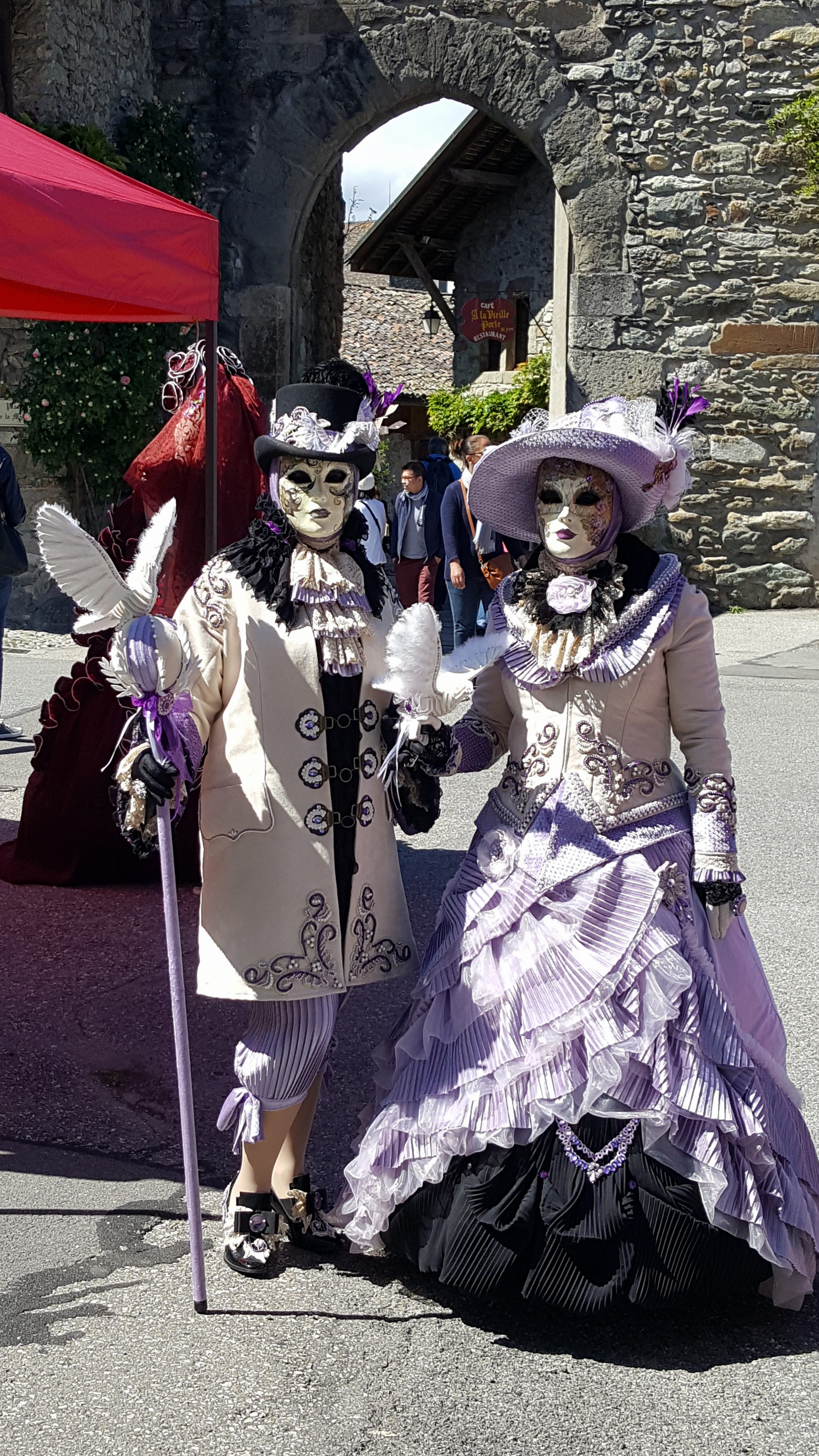
Yvoire’s written history goes back to 1306, a time when Lake Geneva castles played an important role in protecting the strategic trade routes through the Alps and along the lake. However, changing trade routes pushed Yvoire into decline and relative obscurity since the sixteenth century. It is only the onslaught of mass tourism during the twentieth century that placed Yvoire back on the map as a popular day-trip destination for travelers in the Lake Geneva region.
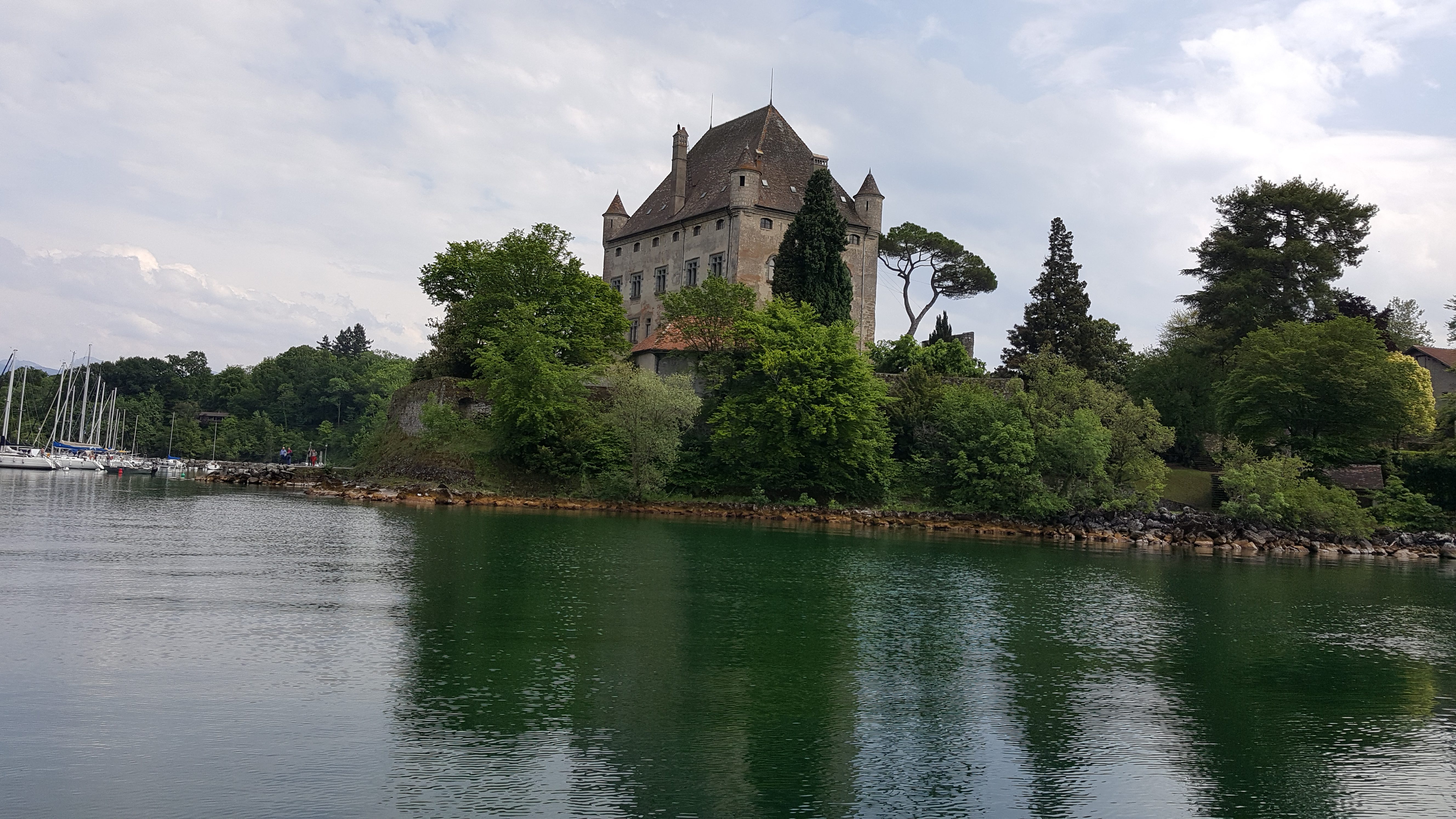
Château d’Yvoire still dominates the small town today, as it did back in the Middle Ages. The castle is a typical Savoy design and reminds of many other medieval castles in the Lac Léman region. Yvoire Castle looks the part with turrets, towers, few windows and thick walls. It has a commanding position right on the banks of Lake Geneva from where it guards the small fishing boat and large modern yacht harbors.
Even on moderately clear days, Yvoire Castle can be seen from towns such as Nyon, Prangins, and Gland on the Swiss side of Lake Geneva. Château d’Yvoire is in private hands and not open to visitors.
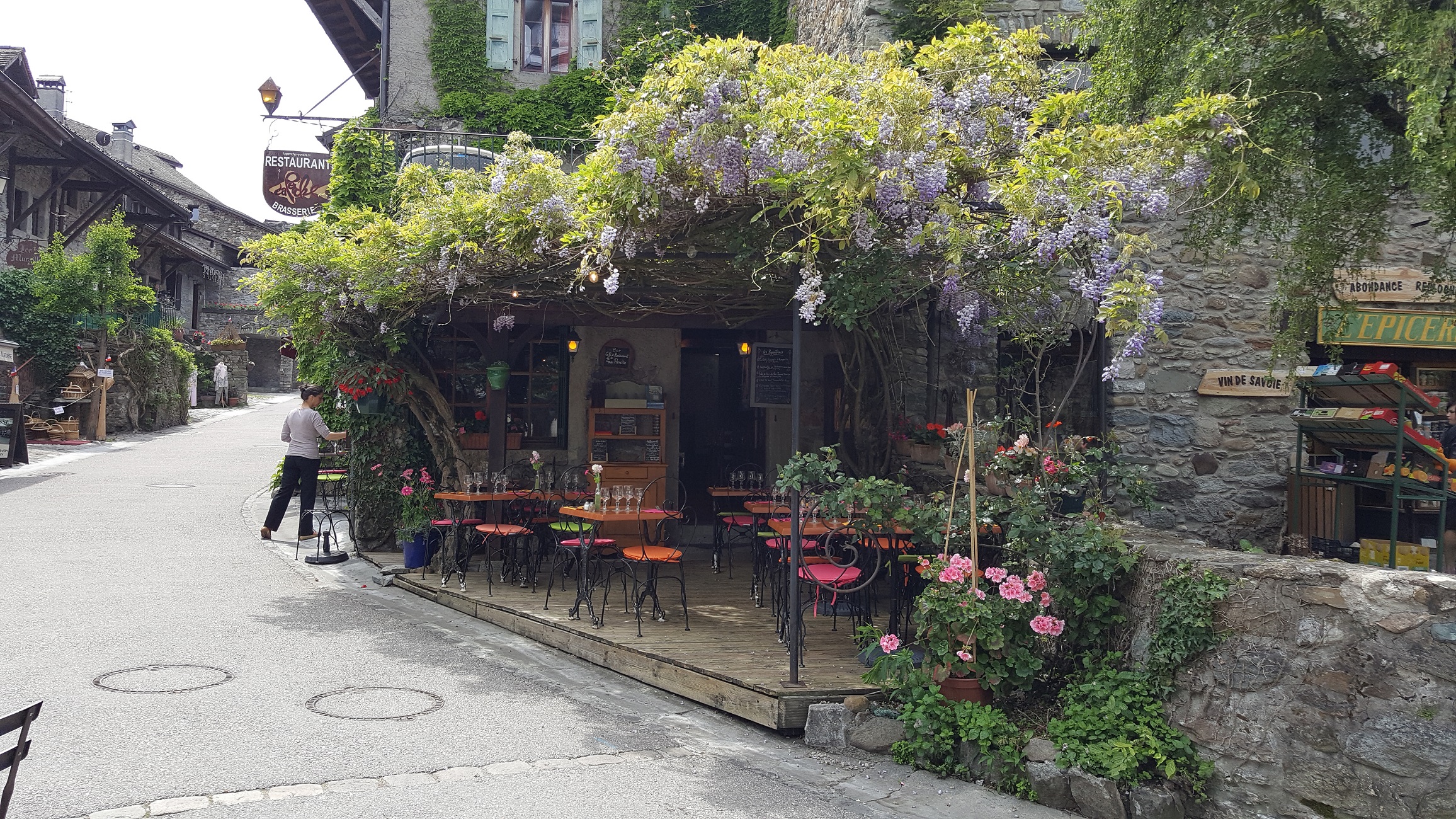
Saint Pancras, The Patron Saint of Children
The church dates back from the eleventh century but has been rebuild and enlarged several times. It is a mixture of different architectural styles. The church’s most conspicuous feature is its onion-shaped stainless steel clock tower and steeple, which gleams in the sun and can be seen from far. The stainless-steel structure was erected in 1989 to replace a tin original from 1854. It is just beautiful and the inside of the church was renovated in 2012 to allow people and visitors to meditate. The church was dedicated to Saint Pancras, who died a martyr at age of 14, in 303, during the persecutions of Christians in Rome.
Celebrated on May 12, Saint Pancras is one of the patron saints of children. He represents innocence and faith in childhood. His name is from ancient Greek and means “the most powerful.” Every day I used one of my senses listening to hear the church bells ring every hour. What fond memories.
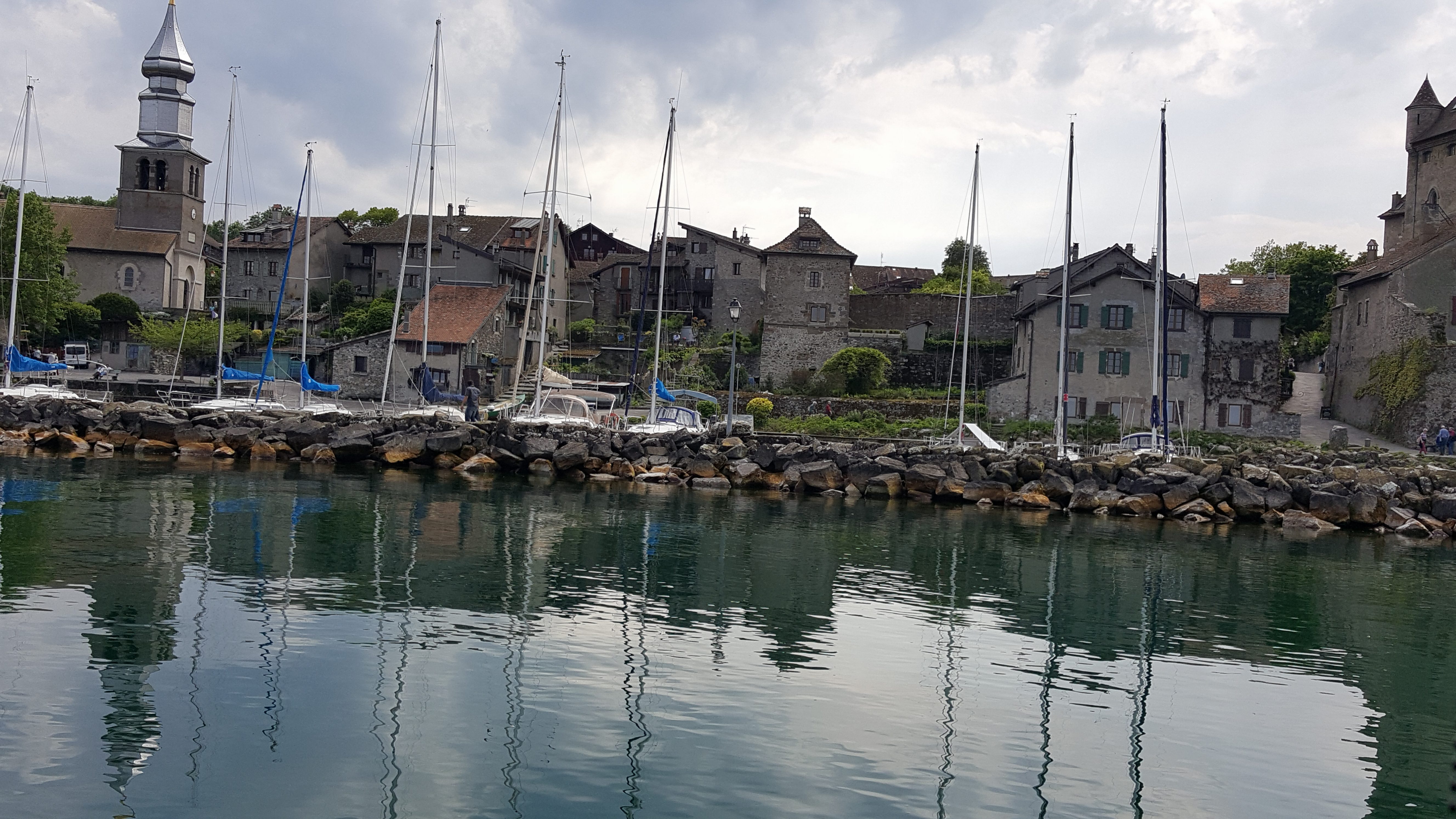
The Fish of Lake Geneva
Perch: The Famous Culinary Specialty of Yvoire
Perch is the most famous, and they prepare it in many different ways. Love the perch cooked in coconut oil! Perch and Fries are the most famous dish at Hotel Restaurant de Port. Yummy! See the picture… even the bird loved the fries. Lake Geneva has many species that are delicious: trout, fera, pike, arctic char, vandace, tench, carp, bleak and many more.
Bon appetite!
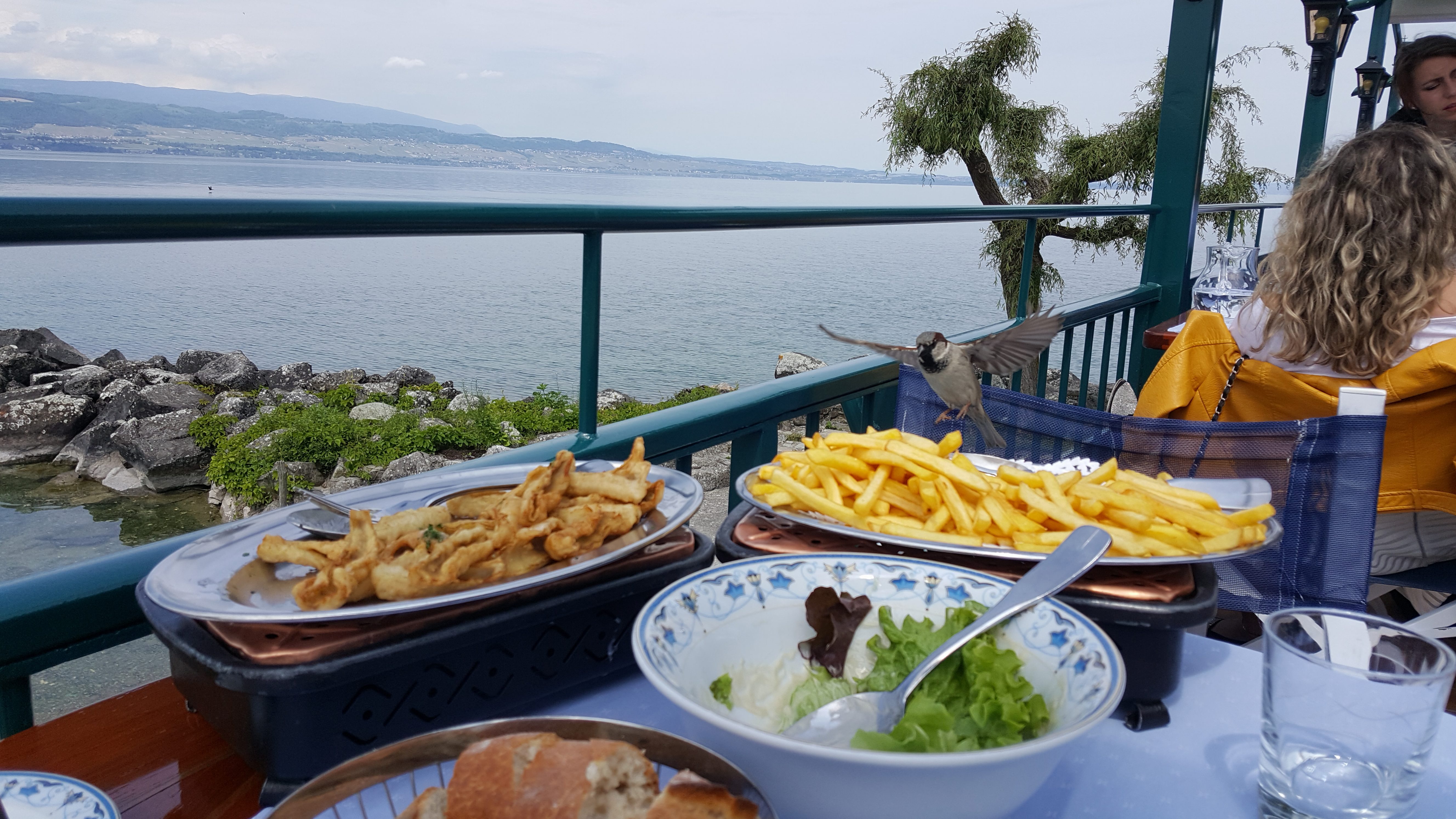 Yvoire also has many other fabulous dishes: cheeses, crepes, dry sausage are just a few. Enjoy one of the terraces to sip a glass or have dinner facing the beautiful landscape of the whole Lake Geneva, Jura, Switzerland, and Northern Alps. Yvoire is a remarkable place that combines authenticity and history. Time stops there.
Yvoire also has many other fabulous dishes: cheeses, crepes, dry sausage are just a few. Enjoy one of the terraces to sip a glass or have dinner facing the beautiful landscape of the whole Lake Geneva, Jura, Switzerland, and Northern Alps. Yvoire is a remarkable place that combines authenticity and history. Time stops there.
Lake Geneva (Lake Leman)

Lake Geneva is the largest body of fresh water in western Europe, with an area of 362 sq. miles (216 sq. miles in Switzerland and 146 sq. miles in France) and contains 89 billion cubic yards of water. It is principally fed by the Rhone, which flows from one end to the other and leaves the lake at Geneva. The lake forms an elongated crescent between the mountainous landscapes of the Alps and the Jura. Its northern and southern sides are only 2.5 miles apart in the “little lake” to the west, but more than 8 miles apart in the “large lake” between Morges and Amphion. The waters are deepest, 1017 ft. in the “upper lake” to the east between Lausanne and Evian. The lake has a great moderating influence on the climate of the region and acts as a bird sanctuary.
Yvoire is a short drive from Geneva and Evian or a fast passenger ferry crossing from Nyon in Switzerland. We also took a 20-minute ferry to Nyon that was also amazing.
So, if you’re looking for a romantic village with breathtaking mountains, lakes and flowers; unique boutiques and art galleries, Yvoire is the place for you.
